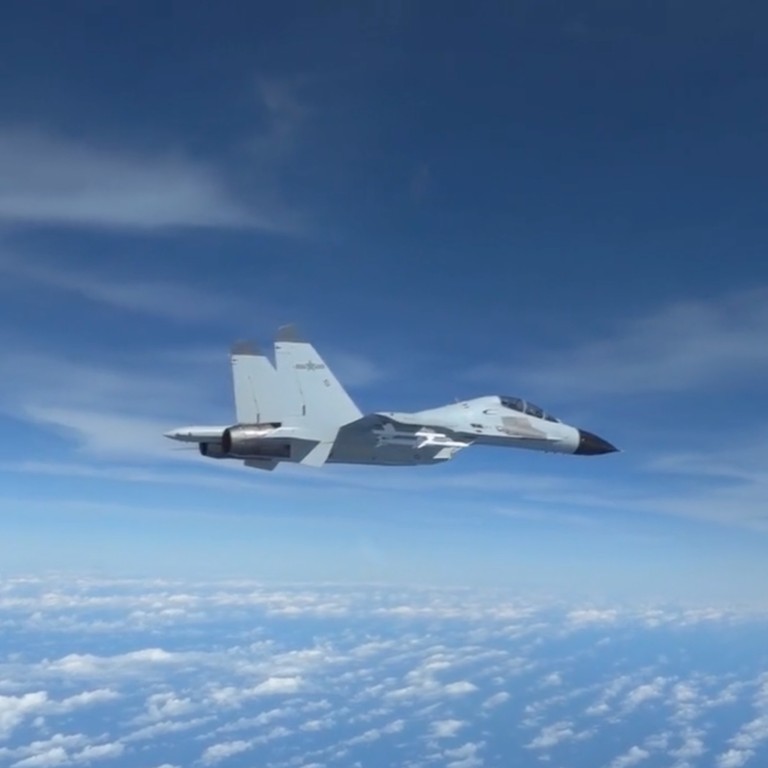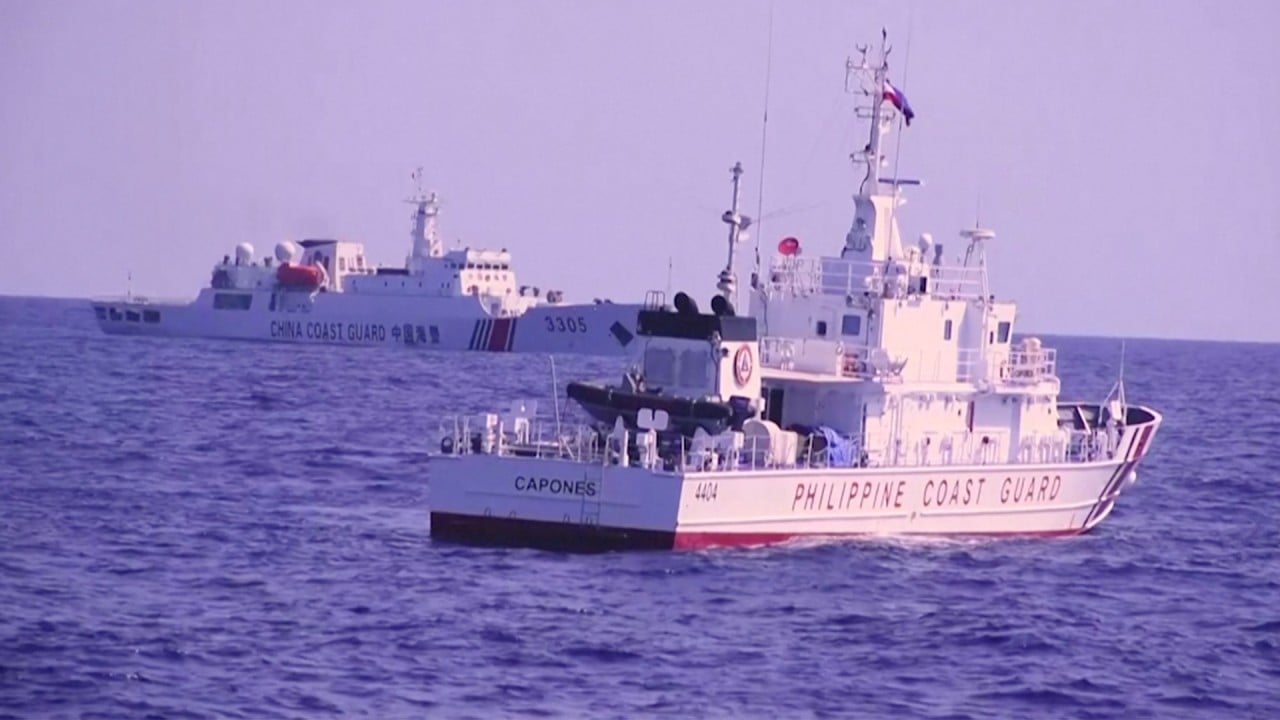
Chinese fighter jet flies metres from US military plane in ‘unsafe’ South China Sea encounter
- The PLA J-11 soars three metres from American reconnaissance plane’s wing then comes within six metres of its nose, according to US military
- The American pilot is forced to take ‘evasive manoeuvres’ to avoid crash
A Chinese Navy J-11 fighter pilot manoeuvred about three metres (10 feet) from a US RC-135 Rivet Joint reconnaissance plane’s wing during the intercept on December 21, according to Reuters. The incident was only made public on Thursday.
The Chinese pilot then “flew an unsafe manoeuvre by flying in front of and within 20 feet of the nose of the RC-135, forcing the RC-135 to take evasive manoeuvres to avoid a collision,” said the statement published by the US Indo-Pacific Command.
Canada says ‘unprofessional’ Chinese pilots put air force personnel at risk
According to footage of the incident from a US military video distribution hub, the Chinese fighter appeared to be flying parallel to the American aircraft.
Chinese foreign ministry spokesman Wang Wenbin blamed Washington’s “provocative and dangerous actions” for causing maritime security issues, during a regular press briefing on Friday afternoon.
“The US has seriously endangered China’s national security by frequently sending ships and planes to conduct reconnaissance at close range,” Wang said.
Beijing called on Washington to stop “making provocative moves and smearing China,” Wang added.
China has significantly strengthened its control over the region in the past two decades, despite an international court ruling against it and multiple overlapping territorial claims by countries including Brunei, Malaysia, the Philippines and Vietnam.
The US military has also increased operations in the South China Sea, according to the Chinese think tank the South China Sea Strategic Situation Probing Initiative (SCSPI), which monitors activities in the disputed region.
Beijing has blamed the US for stoking tensions over the disputed waters by deploying military jets and vessels.
Mystery airship spotted over Philippines near South China Sea
The Chinese military said the US vessel had “illegally entered waters” near the Spratly Islands, showing that the “US is the real trigger of security risks in the South China Sea”.
A statement from the US Navy 7th Fleet described the Chinese military account as “false”. It said the US cruiser conducted the operation “in accordance with international law and then continued on to conduct normal operations in waters where high seas freedoms apply”.


